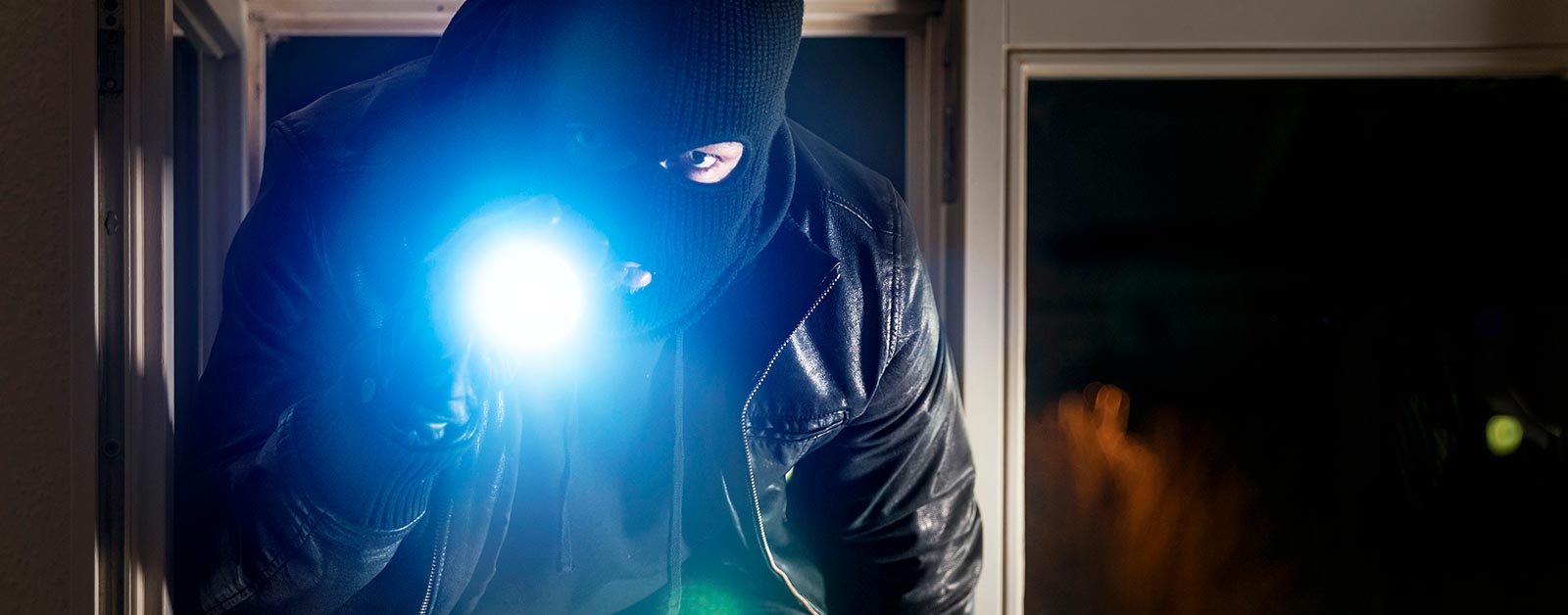Career 15 Vacancies 250+ Employees
Career 15 Vacancies 250+ Employees
InfoGuard AG (Headquarter)
Lindenstrasse 10
6340 Baar
Switzerland
InfoGuard AG
Stauffacherstrasse 141
3014 Bern
Switzerland
InfoGuard Deutschland GmbH
Landsberger Straße 302
80687 Munich
Germany
How your Cyber Security can benefit from a home burglary

Like every year, these summer holidays were, as always, much too short. Probably you indulge in memories just like I do and at least take your holiday home a little bit. But some people don't just associate beauty with holidays. Namely, those for whom the best weeks of the year ended with an unpleasant surprise - a break-in. Worries about one's own home during the holidays are justified because in Switzerland there are 130 burglaries a day on average. The problem: Only a few know how burglars tick. You're probably wondering what this has to do with cyber security? In this blog article, we'll tell you. We also give an insight into a burglar's approach and explain how you can safely protect your home.
Almost everyone knows at least one victim of burglary and theft. But you believe that this will definitely not happen to you, because after all, you have a safe at home and have installed an alarm system. Or maybe you are a potential victim after all? As cyber security experts, we are very familiar with cyber criminals' tricks and know how to protect your physical property.
Does the NIST cyber security framework say anything to you? If not, you should read about it in one of our earlier blog articles. The five elements of Cyber Security are: Identify, Protect, Detect, Respond and Recover, and can be perfectly transferred to protecting your home.
Identify – Preparation is everything
When you choose a new home, you are already taking precautions against burglary, even if it is unconscious. Is the area a busy one? What are the neighbours like? What is the reputation of this area? All this already plays an important role in making the work of burglars more difficult - or easier. Because a burglar prepares meticulously. He knows exactly where it is worthwhile committing a break-in, how well the neighbourhood is monitored, which houses have an alarm system, where there are homes with dogs etc...
Protect – There’s no such thing as 100% protection
There are many security tips, for example, ones taken here by the police. Alarm systems, surveillance cameras and security locks are a good start, but they are not enough (and the same is true for cyber security). For example, security bars on shutters, burglar-proof laminated safety glass and time switches to side-track the burglar offer more protection for your home. Another trend that can also be very valuable in terms of burglary protection is the "Smart Home". Thanks to clever sensors, much more than just light and blinds can be controlled. In addition to the usual alarm systems, there are now also sensors that register broken glass break-ins and immediately forward them to the police (and you). Even if the burglar turns off the power. That's clever, isn't it?
Detect – Warning, alarm!
A wrong step or a thoughtless action means that the thief is detected - or your watchful neighbour reports the attempted break-in to the police. Unless Rover has already driven the burglar away, sensors will (hopefully) trigger an alarm. This will be redirected to the police and/or your smartphone. In the worst case scenario, you only discover the break-in when you come home. What now?
Respond – Now you need to get going!
Now above all, it's about just one thing: speed! Every minute counts. At best, thanks to the sensors, the police are notified directly and move in. If you are the first person to report the break-in, you should keep a cool head and think through the next steps carefully. Don't touch anything and call the police immediately. Now the experts are needed! Otherwise, there is the danger that you will cover up important traces or that the thief has already left the country.
Recover – After the burglary is before the burglary
You are in luck - the break-in was not a bad one and the perpetrator might be caught. But even if nothing has been taken, afterwards, it is important to learn from it so that something like this does not happen again. Think about how the burglar got into the house. What safety precautions will be needed and appropriate in the future? Who can help you make the house safer? You will only be able to sleep soundly again, once you have thought about the incident and put yourself in the burglar’s mindset.
The digital break-in – Cyber Security is the be-all and end-all
Just see - the NIST framework is fundamentally easy to understand. Now imagine that your house is your company's network. Virtually all the information - all the belongings in the house - is stored there. What if they break in and steal information? The media tell us almost every day what damage cyber criminals can do.
What home burglars and cyber criminals have in common
To catch cyber criminals before they can do any damage, it takes some basic preparation to "identify" them. On the one hand, you need to know about your most valuable information - the "crown jewels" - via Risk & Asset Management. On the other hand, the weak points in the network must be detected. This is best done with a penetration test with "good hackers" working on your behalf and automated vulnerability management. Subsequently, measures then need to be taken to close those weak points that have been detected (Protect). One possibility here could be to raise employee awareness via security awareness measures. For us, for example, this would be like telling the neighbours that we are going away. Another possibility would be specific solutions such as perimeter/network, endpoint security solutions or a bespoke identity & access management - i.e. to have a burglar-proof lock or an alarm system installed. Just like in the real world, Detect and Response is central to your cyber security. If a burglar does manage to break into your network, he will be detected as soon as possible and appropriate action can be taken. Just like a home break-in.
Sounds complicated? So that you can really understand the principle of the NIST framework and benefit from it, we have created a clear info graphic with examples for you. We compare the real world with the cyber world and give you useful security tips for both worlds - including our home burglar. Download now!
Hide & Seek – Do you know what your weak points are?
A good cyber security strategy consider all phases of the NIST Cyber Security Framework. The first step - "Identify" - lays the foundations for all further measures. Just like in your home, it is essential to know the risks for your company. Do you think your network is secure? Find out with our Cyber Attack Simulation. Our penetration testers act like real hackers and try to break in -without stealing anything, of course. Learn more about our Cyber Attack Simulation!
Blog

Zero Trust Maturity Model 2.0: Reifegradmodell auf 5 strategischen Säulen

SWIFT CSCF v2025 erhöht den Druck: Nur cyberresilient ist compliant



